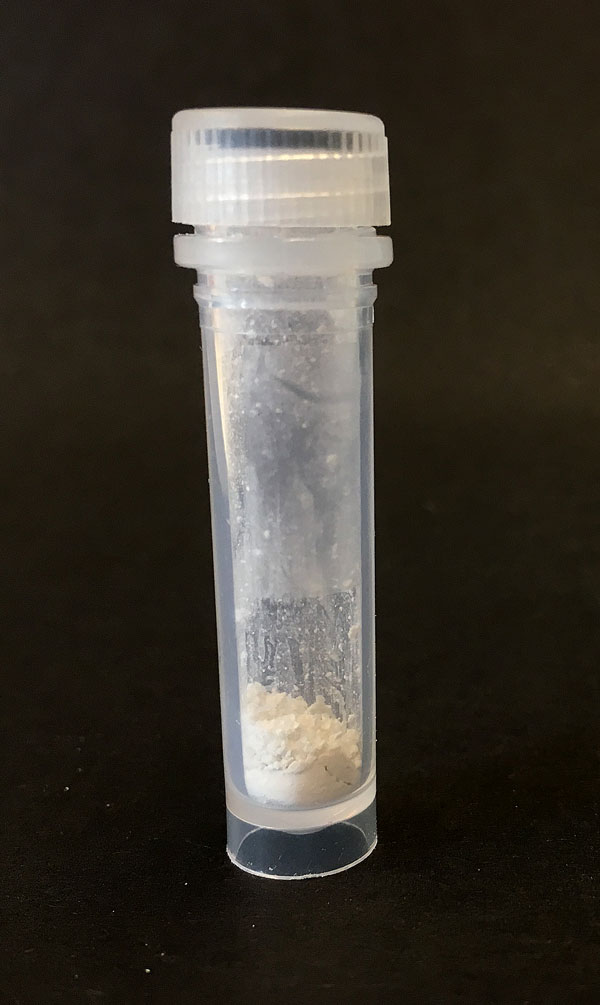
Dry "White Powder"
Scenario: Three US Senators have received letters from a foreign source. The text of the letters indicated nothing unusual, but a white powder fell out when the letter was opened. Your CST has been called in to assist local authorities in the analysis of each of these samples to determine whether any of the powder samples contain Bacillus endospores.
- Sample Vial A: a vial of the white powder from Senator Manson letter.
- Sample Vial B: a vial of the white powder from Senator Smith letter.
- Sample Vial C: a vial of the white powder from Senator Robertson letter.
ANALYSIS OBJECTIVES: The Incident Commander requests that you use fluorescence microscopy to determine which sample(s) (if any) contain Bacillus endospores.
Suggested course of action:
- It may have Bacillus endospores, as it’s a dry powder. Knowing that endospores germinate within 15–30 minutes, you should work quickly to prevent germination.
- Each sample of the triplet set should be evaluated separately to avoid cross-contamination.
- Aliquot 10µl sample to the center of each of the following I-F slide types: DAPI, SYTO, PI, Insti-Spore; or use an Insti-Fluor Combo2 test slide. (Click on the links to see step-by-step instructions.) Mark each test slide with the FPAT vial designation.
- Dry at 42C (10min), add 7µl immersion oil, apply coverslip and evaluate using epifluorescence microscopy.
- It’s always a good idea to test powder samples with Calcofluor M2R (Insti-Fluor CF) to test for the presence of Yeast.
Special instructions:
- You will receive a scenario indicating a suspected bio-agent (E. coli for example). They also give you three different sample vials. You should look for ANY bio-agent in any vial and not limit yourself to the suspect biological. Keep to the “Closed Set”, but always suspect that there will be something different in each different vial.
- It is unlikely that there is more than one bio-agent per sample vial. Thus, if you find a lot of yeast (for example) in one vial, don’t spend a lot of time looking for another bio. It’s usually ONE Bio per sample vial.
- You will almost always find “bacteria” and “starch” in any sample, as it is a common contamination. Look for an overwhelming number of bio-agents in the samples and report that.
- The only definitive fluorescence test for fungi is Calcofluor M2R (Insti-Spore CF).